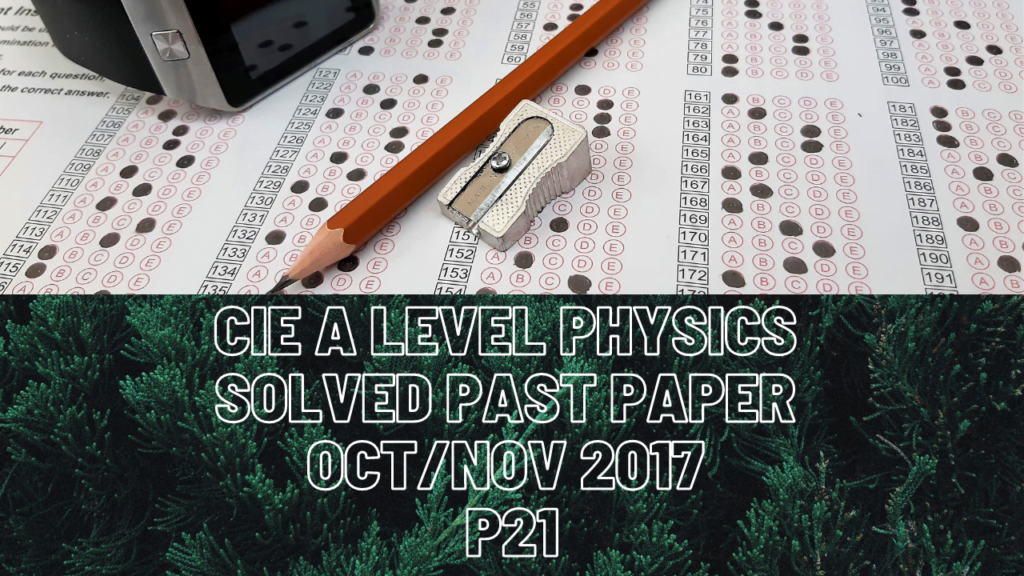
CIE A Level Physics Solved Past Paper Oct/Nov 2017 P21
1 bi) For us to calculate the drag force on the ball when it is moving at 25m/s, we should also have the value for constant, K and uniform density of the air. To determine the values for these, we can use the 33m/s speed of the ball when the drag force on the ball is equal to its weight.
c) When air resistance is significant, the acceleration of the object varies during its motion. Initially the object moves with acceleration due to free fall and then it starts to decrease due to increase in drag force until it becomes zero. This phase is known as terminal velocity.
2d) Car Q is behind the car P until t which is what we have to find. We will break their distances covered into two parts- first is when they both accelerate and the second is when they travel at constant speed. They both accelerate for 12s and travel at constant speed for x seconds until car Q passes car P. In total they have travelled the same distance so equating their distances, we can find the value of x seconds for which they travel at constant speed before car Q passes car P. After equating them, you will have the value of x as 14s which is the time interval of constant speed. We must add this to the time interval of acceleration to get the total time taken for car Q to pass car P.
3 bii) Distance between two adjacent anti-nodes is wavelength/2 and distance between a node and its adjacent anti-node is wavelength/4
iv) Minimum frequency of sound that forms in a tube with both open ends has its tube length as wavelength/2
5a) I3 from E3 splits at end Y into I2 and I1 so I3=I1+I2
b) E.m.f.=sum of p.d. around the loop so total e.m.f around the loop WXYZW, since opposite terminals of E1 and E3 are facing each other, is E1+E3 and so this should be equal to their sum of p.d.s
c) Since E1 and E2 have their opposite terminals together so total e.m.f. of the loop is E1-E2 which should be equal to difference in their total p.d.s around the loop.
6 bv) The particle moves at constant acceleration so the graph WON’T be a horizontal line since that would represent constant speed. If the graph had speed on x-axis, the graph would then be increasing slope because k.e. is directly proportional to (speed)^2 and the relationship between k.e. and distance is linear (k.e=0.5m(u^2+2as)) so the graph will be a straight line through origin.
7 biv) The combined resistance of the wire increases which decreases the current in the wire. This leads to less p.d. across filament wire and its resistance decreases.